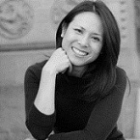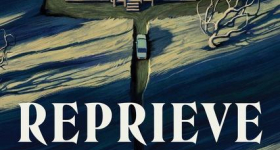Originally published at the Huffington Post.
In the week or so since its publication, Amy Chua's controversial Wall Street Journal essay prescribing "Chinese" parenting has run through the system like a bad case of food poisoning. There has been nausea, intense pain, and now a seemingly massive wave of relief: She didn't mean it, after all! (Journalist Jeff Yang reported that the book from which the "excerpt" was taken offers a far more nuanced, chastened message; Chua crosses her heart that she had no idea how the fragments would be edited; Asian American critics who had decried her harmful message now look abashed as if they are themselves to blame for having misjudged her.)
Despite the frenzy of responses both in and now outside the Asian American community, however, I've not seen anyone name my deepest dismay about this essay. And as the piece continues to circulate -- through the delayed but ever-widening network of emails forwarded -- that neglected point becomes only more salient: Long after we have tired (as we have already begun to tire) of Facebook-posting or retweeting rebuttals and responses to Chua's piece, it will still be finding its way to Asian parents like my own.
In light of this, to the extent that the book and essay do not align, the essay is more reprehensible, not less.
Because you see, the WSJ essay will reach these immigrant parents without context. It will not be accompanied by the outpouring of blogs and comments, testifying that parenting methods like those the article champions have driven their writers (or siblings) to therapy (or suicide). Neither will it be accompanied by Yang's article nor Chua's book, in which latter the author says she has beat a partial retreat from these methods -- finding their destructive costs too high.
Imagine a case in which a Yale professor believed herself to have discovered a powerful vaccine, and had been applying it within her clinical context with stunning results. Thirteen years in, however, she discovers that long-term effects are far more mixed: Some patients achieve a matchless immunity to environmental dangers, but an alarmingly high number of them suffer a total system collapse. The drug company has moved into promoting this vaccine for widespread use, but its blitz ad campaign makes no mention of the recent bleaker findings. Only if consumers order the study will they discover that the researcher herself now questions the vaccine's use, fearing that the risk of destroying the very thing she had meant to protect is unacceptably high.
If to this analogy just now you objected, "But she's not a researcher!" -- quite right. And quite to my point. Chua's memoirist perspectives on parenting are no more academically based or weighty than any other parent's. The WSJ piece is no more accountable to standards of social and cultural analysis than an ad campaign. And yet.
(Asian immigrant) parents who already embrace eyes-on-the-prize childrearing will click on the URL in the email, note Chua's name brands (Harvard! Yale!) along with her children's (Carnegie Hall!), and see all the authority and expertise they need. Seeing their own values and methods so illustriously trumpeted, they can hardly be expected not to bask in the article's own smugness.
The parenting methods Chua describes are not of her own invention, and among Asian immigrant families they are not rare. The CDC's alarming findings of high rates of suicide among young Asian American women became news only a few years ago, and research has not yet emerged to tie cause to effect -- but anecdotal evidence abounds, pointing accusing fingers to unbearable parental pressures for perfection, professional achievement, and prestige. Yet the article offers just such parents unqualified vindication in what they are doing.
I am chilled by the image of the parent who already drives his child into the Ivy Leagues and med school by use of insults, isolation and shame, now encouraged to redouble his efforts and ratchet up demands -- or at the least, to dismiss what doubts or second thoughts he may have begun to entertain in the face of his child's distress.
The reader who believes that, to such a "Chinese" parent, the throng of Asian American "bloggers" and their "commenters" pouring grief onto the webpage are so much as audible over the boom of Wall Street Journal and Yale Law, severely misapprehends the nature of this parenting paradigm.
Whatever we may believe of Chua now -- however much we may wish that she had at least seen fit to issue a counter or qualifying message to contest the sensationalism of an unscrupulous ad campaign -- the damage is done. And it will continue to be done, in the months and even years to come, as this spurious piece of parenting wisdom surfaces again and again in fragile families -- inoculating not the children against harm, but their parents against self-reflection or doubt.










Comments
Hi, Josh. Thanks for this. Yeah, it's looking like a distressing amount of contradictory or discrepant information floating around online about these suicide stats. Sometimes two places will both cite the CDC and say conflicting things. I'm going to be checking into this as thoroughly as I can, but meantime have asked a researcher friend who has offered some provisional and clarifying responses:
(1) yes, men of all races have higher suicide rates than women. But women have higher rates of lifetime suicidal ideation and attempts.
(2) yes, it is only when you examine women ages 15-24 excluding Native American women, that AAs have the highest rate. But the CDC rates from 2007 show that AAs have higher completed suicide rates compared to whites.
(3) Duldulao et al. is based on a large nationally representative sample of AAs--the National Latino and Asian American Study (NLAAS); however, this study targeted Chinese, Vietnamese, and Korean Americans, so it actually doesn't provide the most accurate representation of AAs by ethnicity. Yes, it is problematic to compare rates from NLAAS with that from another large scale epi study, the National Comorbidity Survey, that was conducted in the early 90s: suicide rate have gone up since the NCS was conducted. But the studies from the NLAAS dataset are useful for examining potential risk and protective factors for suicidal ideation (SI) and attempts (SA) among AAs. For example, the Cheng et al. study found that risk factors for SI and SA were family conflict, perceived discrimination, being female, and the presence of mood/anxiety disorders. Duldulao et al. found that US born AAs are at higher risk than foreign born.
(4) Though among "older" women , Whites have higher rates than AAs, among women over age 65, AAs have higher rates than Whites.
(5) Agreed, there is never any mention of the proportionately lower rates of suicide among AA men compared to men of other races.
Sorry about the delay, Josh. To keep the spammers out we require all comments to be manually approved by the blogger or editor before they go up -- in this case, both me. :) But that makes for a time lag, oftentimes...
First though, totally didn't mean "checking" as in, you know, to check you! Was passing on my colleague's responses, merely, and I don't think she disagreed with you, either. I appreciate the important questions you're raising; we're working on some kind of clarifying statement for the Ask a Model Minority Suicide column, actually, as the most appropriate place for it. Hope to have it up soon.
Anyway, so good point (and point taken) about not jumping to suicide as the (alarmist or only) conclusion to this parenting discussion. There surely are many other dimensions and consequences to be addressed from such parenting -- even if suicide is not necessarily an exaggeration, either.
Age groups: Yes, the 65+ group does certainly demand a different (or differently angled) narrative than we've been rehearsing here. (One of the other blogger-respondents -- I forget who, sorry, there've been so many! -- mentioned something along the lines of your interesting speculation: that such parenting is ultimately also harmful for the parents, who damage their relationships with their children even decades down the line. Nonetheless, different can of worms.) As for the 20-24 group, though, intuitively (and intuitive is all I claim for this right now) that makes a lot of sense to me, actually: that's college age. In other words, when the girls first leave their parents' tight supervision. Many options -- and self-discoveries -- emerge there for the first time, some of them very dismaying.
As for your question about mothering vs. fathering in this controversy, actually, that question's been raised by another AsAm blogger who has said he'll be writing about it soon: Jason at Ricedaddies. Keep an eye out for his piece! My quick op: this parenting is not gender-specific, though the press has certainly colluded in Chua's exceedingly "traditional" (sexist) view of gender roles (this in the book, even more so).
Anyway, thanks, Josh. Keep an eye on AAMMS for the stats piece. Hopefully soon.
I love that we're collectively gathering/comparing stats info here.
A silver lining, I'd say.
Yes, it does. It certainly, at least, can.
Website created by Joel Wong, a leading researcher on AsAm suicide:
http://www.sapasianamerican.org/research/highlights